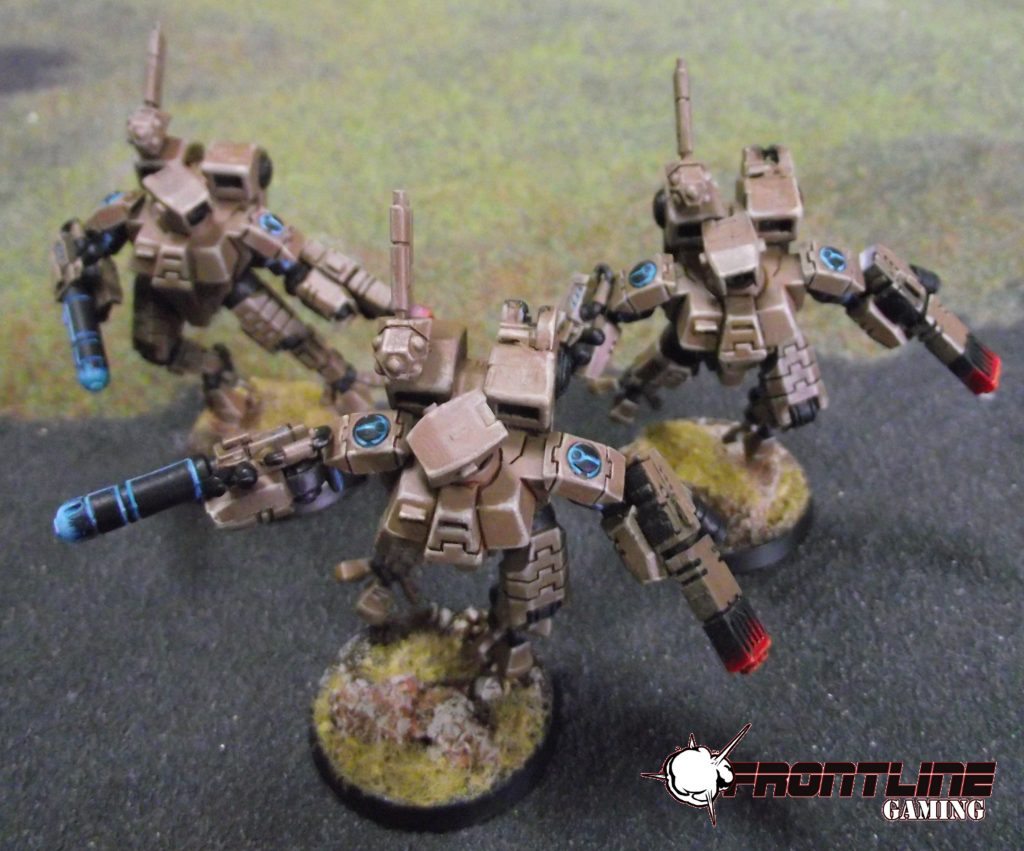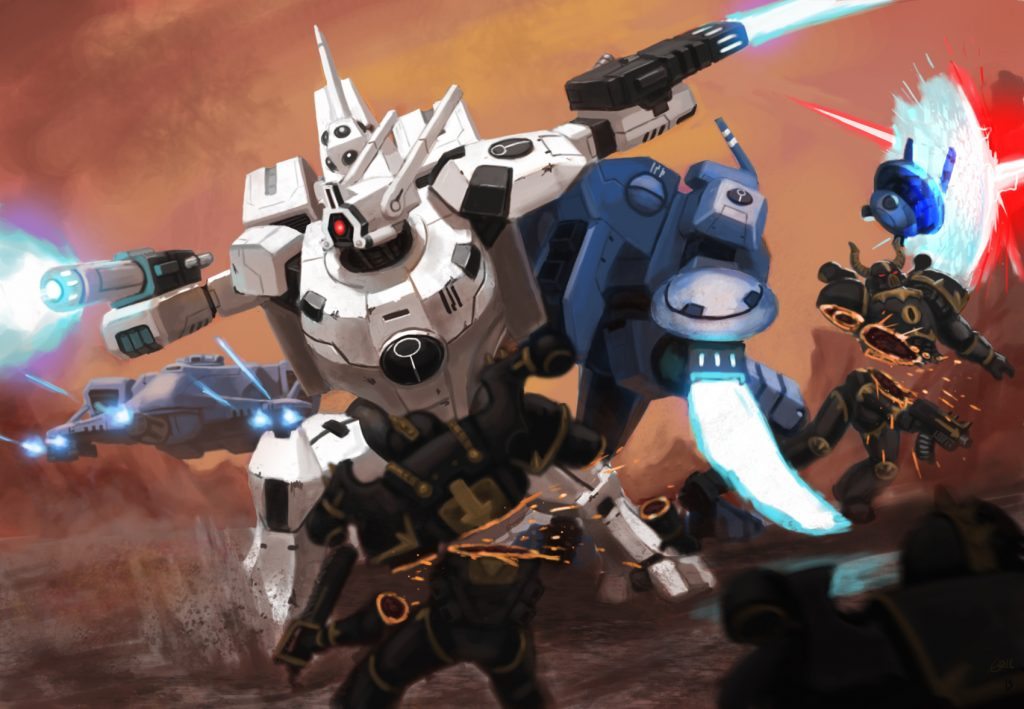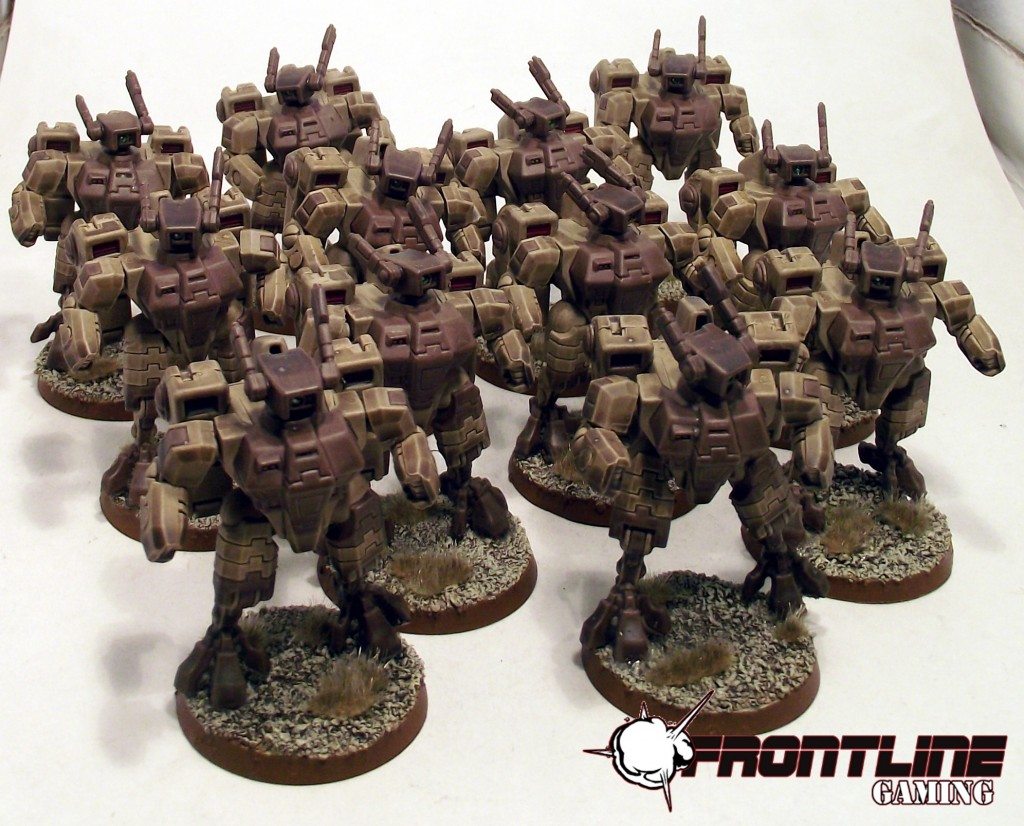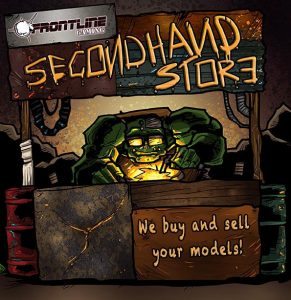Can Crisis suits be… good again? Is that legal. Click to read on, or check out the Tactics Corner for more reviews and strategies.
Out of the Closet…
One of the goals Games Workshop has had over the past two editions is to bring units out of the junk closet- especially iconic units. For many editions of the game, quite a few units from any given codex would be not just subpar or bad, but actively terrible- such a drag on your army that you would get a raised eyebrow just for including even a minimum unit of them. This was bad when it was some of the more off-brand stuff like Pyrovores or Vespid, units that no one really remembered or cared about, but it was exceptionally problematic when it was units that were iconic to the game. This even happened with all-stars like Tactical Marines, Crisis Suits, and things that were supposed to be central parts of their faction, but were instead just dead weight. Warhammer 40K had a big problem with units that were just designed really, really poorly and simply never saw the table in anything resembling a competitive match for a long, long time.
But as of recently, Games Workshop has been making strides in fixing that issue. While obviously not every unit is seeing play at top competitive levels (since by definition only the very best units will), most units from a codex at least have some argument for why you might want to take them- and the central units to a faction’s identity are seeing more and more support to make them actually do what they are supposed to. For the Tau codex, this means that Crisis Suits are (gasp) good!
…And Into the Fire?
Now, this isn’t the first time Crisis have been the mainstay of Tau, but I do think it’s worth looking into what is changing about them to make them good again and what that can tell us about how GW is approaching its unit design. 9th Edition is a lot more purposeful and intentional than most other editions, and so there is a legitimate benefit to actually trying to look at the thought processes behind what it is doing, and Crisis are a good window into that.
So let’s start off with the most obvious one: Crisis Suits get the Core keyword. While it may not do anything on its own, Core is incredibly important because so many other abilities are linked to it- as with most other books, a majority of auras and many buffs, even stratagem buffs, exclusively apply to Core units. (Markerlights, fortunately, still work for anyone.) Whether you need to reroll your 1s to hit, reroll all of your wounds, perform an action while shooting, or any other type of bonus you’re looking at a Crisis suit is one of the small handful of units that is likely to benefit from the ability- and more importantly, one of the heaviest-firepower units that is able to benefit.
Secondly, they are the recipient of a lot of unique buffs. Commanders, for example, can offer Crisis teams a variety of buffs that only apply to them- even more so than Core, there are a lot of strats and abilities keyed specifically to Crisis that they can take advantage of. And these are not trivial bonuses, either, especially as many of them can be stacked up with each other to get powerful combinations of hit, wound, and statline effects that make them dangerous to almost any sort of target.
Third, Tau weapons themselves have gotten a lot of upgrades that make them more powerful and effective, and though this benefits many units in various ways the Crisis suit is the mainstay carrier of many of these weapons (and in some cases essentially the only one.) As a result, they disproportionately benefit from the improvements to many of these guns, most notably the Fusion Blaster and Plasma Rifle- and the fact that they are able to mix and match them in a variety of ways means that they can take advantage of their strengths when splitting fire in a way that other units often can’t.
This flexibility of loadout is important to the Crisis’s role in the book, because it means that two different Crisis teams with different setups can perform very different roles while both being valuable- and both being able to benefit from many of the same stratagems and abilities. Flamer/Burst Cannon suits and Melta/Plasma ones might serve wholly different purposes in the army, but both of them can very much appreciate being able to reroll wounds, or advance without penalty, or what have you.
All of these factors together mean that Crisis are almost certainly going to be a mainstay of whatever sorts of armies come to the front of the Tau codex- their strengths are so unignorable and so central to what the book wants to do that I don’t see any realistic world in which Tau armies aren’t running Crisis suits in at least some numbers. This could take any number of forms depending on other factors, but they will certainly be present.
Lessons Learned
So, what can we take away from this? A lot of things, I think. Game design isn’t nearly as simple a process as it’s often taken to be, so we can see a lot of GW’s thought process in what they did (and didn’t) do with the book.
The place to start, I think, is the obvious one: the price. One thing you will see with every older codex is that when people suggest how to fix units, they focus heavily on point costs. However, this is a very clumsy- and often somewhat fruitless- suggestion because the balance between a unit being undercosted and overcosted is actually much, much thinner than one might think. In fact, for some units there is no “fair” costing that can be set within the bounds of the system, something that seems a bit counterintuitive but is often true. GW has avoided this pitfall and barely adjusted the price of the Crisis suit at all, although given that weapon prices constitute the majority of its actual price this may be a bit deceptive of a fact. Still, I think the point stands- they made Crisis suits good without drastically bringing their price down.
They also avoided the similar pitfall of altering the statline to a significant degree, which is a much more complicated decision to analyze but is often suggested in a similar fashion. In particular, raising them to BS3+ is a nigh-universal desire from the Tau community, and while I certainly understand it I think it does work against the basic character of the Tau army to have large numbers of high-Ballistic Skill units floating around.
Instead, Games Workshop took a more subtle route by carving out a niche for Crisis suits in a somewhat roundabout way- by pushing other units into more specific niches and leaving the main role of “generic firepower-having unit” open for Crisis. In the past Crisis were often overshadowed by various other units who simply did their job more efficiently, or were better-protected in doing it; while this is still true to some degree, it isn’t nearly as stark as before and Crisis now have a number of unique advantages to their name that the other units can’t simply poach.
They also gained a lot from the another simple addition- the Infantry keyword. While this might be at times a disadvantage (as lots of abilities key off of targeting infantry), it gives them a ton of bonuses when it comes to terrain as well as being able to perform actions, something that is critical to being able to play well in 9E. Tau often struggle with secondary objectives and being able to more reliably complete them, even at a cost, will help them keep in the game more and actually play to the mission more often, rather than simply hoping to shoot the enemy to death and win by default (which is a terrible plan these days.)
Conclusion
As a big fan of robots of all sorts, I am very excited to be able to put Crisis suits back on the table in numbers both in narrative and competitive play and I’m glad to see Games Workshop continuing to make a lot of the trashier units in the game more functional. I used to write whole series of articles on units that were utterly incapable of doing their jobs as described in the fluff, but that isn’t really much of a joke these days because most units do what they say on the tin- if you see something that is described as a stealthy ambusher, you can bet that it is going to come out of reserve and give you a bad time and if the fluff says that a gun is dangerous to tanks, you can bet that it’s gonna have a damage profile that is actually scary rather than some d3+1 nonsense. This is a great change to see for players of all stripes and I hope that we see it as a major ongoing objective as the game moves forward, because the narrative fiction we all subscribe to is an important part of the game, even when you’re not playing narratively.
As always, remember that you can get your wargaming products at great discounts every day from the Frontline Gaming store, whether you’re looking to start a new army or expand an existing one.




